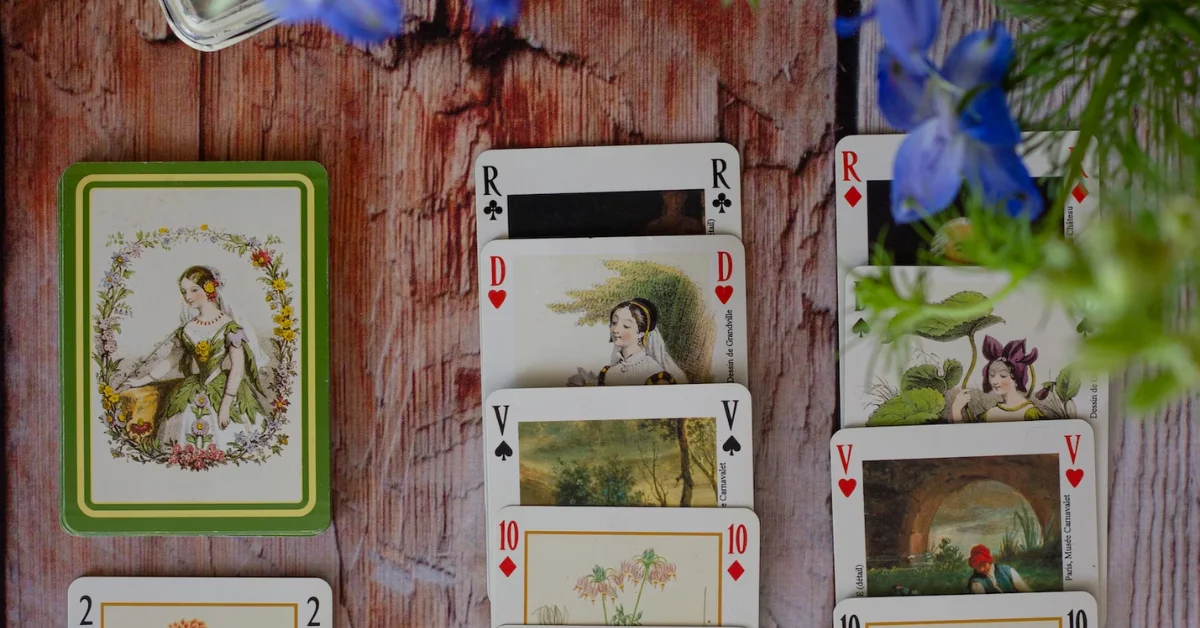Introduction
Solitaire, the timeless single-player card game, has captivated millions of players worldwide for generations. Beneath its deceptively simple surface lies a realm of strategy, precision, and mastery, showcasing the unparalleled skills of Solitaire Masters. In this article, we will delve into the world of Solitaire Masters, exploring the history of the game, its various iterations, and the remarkable individuals who have elevated it to an art form.
A Brief History of Solitaire
Solitaire’s origins are shrouded in history, making it challenging to pinpoint its exact birthplace. The game is believed to have emerged in Europe during the 18th century, possibly as a pastime for the French aristocracy. Its name, derived from the French word “solitaire,” meaning “solitary” or “alone,” reflects the essence of the game’s solitary nature. Over time, Solitaire evolved and spread across Europe before crossing the Atlantic to find a new home in North America.
In the United States, Solitaire gained popularity during the 19th century, particularly during the Gold Rush era, offering a form of solace and entertainment amidst the rugged frontier life. As it continued to evolve, Solitaire became a staple in American households, solidifying its place in modern card gaming culture. In 1990, Microsoft Windows included Solitaire as a built-in game, introducing it to millions of computer users worldwide.
The Basics of Solitaire
Solitaire is typically played with a standard deck of 52 playing cards, although variations exist. The primary objective of the game is to move all the cards from the tableau (the main playing area) to the foundation piles, where they must be arranged in ascending order by suit, starting with the Ace and concluding with the King. The tableau consists of seven columns of cards, with the top card in each column face-up and the rest face-down. Additionally, there is a draw pile and a discard pile.
Players can maneuver cards within the tableau by arranging them in descending order while alternating colors. For instance, a red 6 can be placed on a black 7, or a black Queen on a red King. Sequences of cards can be moved together, but they must maintain descending order and share the same suit. The draw pile permits players to flip one card at a time, with the objective of strategically moving cards from the tableau to the foundation piles while revealing and utilizing concealed face-down cards.
Strategies for Success
Solitaire is often mistaken for a game of chance, but seasoned players recognize that strategy and meticulous planning are critical for success. To ascend to the ranks of Solitaire Masters, one must master several key strategies:
- Revealing Face-Down Cards: Priority number one in Solitaire is uncovering face-down cards. This action enables players to access additional cards and make informed decisions. Begin by revealing cards with fewer face-down cards on top of them.
- Empty Columns: Creating empty columns in the tableau is essential for maneuvering cards effectively and expanding options for building foundation piles. To create an empty column, transfer all the cards within one column to another.
- Strategic Foundation Building: Exercise discretion when constructing the foundation piles. It is often wise to focus on one suit at a time, starting with the one that has the most accessible cards.
- Delay Moving Kings: It is generally advisable to refrain from moving Kings to the foundation piles prematurely, as doing so can obstruct columns and restrict your mobility.
- Forward Planning: Think several moves ahead and anticipate the consequences of each action. A well-thought-out approach can lead to victory.
- Leveraging Sequential Reversals: Whenever a sequence of cards in descending order and opposite colors is available (e.g., black 9, red 8, black 7), use it to your advantage. Shift the entire sequence to another column to access the cards beneath.
- Patience: Solitaire rewards patience. Occasionally, making what appears to be a suboptimal move in the short term can pave the way for superior moves later on. Take your time and analyze the board.
Solitaire Masters: The Pinnacle of Skill
Becoming a Solitaire Master is no trivial accomplishment. It requires not only an intimate understanding of the game’s rules and strategies but also the ability to adapt to diverse situations and think critically. Solitaire Masters are distinguished by their extraordinary skills and consistent success in the game.
Among the most renowned Solitaire Masters is Thomas Warfield, the creator of Pretty Good Solitaire, a widely popular computer program offering a diverse selection of Solitaire games. Warfield’s profound expertise in Solitaire has earned him a prominent position in the Solitaire community and underscores the level of skill attainable in the game.
In addition to Thomas Warfield, countless individuals have reached Solitaire mastery through unwavering dedication and practice. Some participate in online Solitaire tournaments, where they showcase their skills and vie for the coveted title of Solitaire Champion. These competitions can be fiercely competitive, with players from all corners of the globe putting their abilities to the test.
Benefits of Playing Solitaire
Solitaire transcends mere entertainment, offering several benefits that have contributed to its enduring popularity:
- Cognitive Enhancement: Playing Solitaire enhances cognitive skills such as memory, attention, and problem-solving. It necessitates strategic thinking and planning, promoting mental agility.
- Stress Alleviation: Solitaire provides a calming means to unwind and alleviate stress. Its solitary nature enables players to focus their thoughts and escape the pressures of daily life.
- Universal Amusement: Solitaire can be played virtually anywhere with a standard deck of cards or on a computer or mobile device. It is a portable and easily accessible source of amusement.
- Personal Growth: As players refine their Solitaire skills, they can monitor their progress and strive for self-improvement. The satisfaction of triumphing in a challenging game is a reward in itself.
Conclusion
Solitaire, often considered a simple card game, conceals a world of complexity and strategy that beckons to those who seek to master it. Solitaire Masters, like Thomas Warfield and others, have dedicated themselves to honing their skills and achieving excellence in this timeless pastime. Whether you approach Solitaire as a casual player or aspire to join the ranks of Solitaire Masters, remember that triumph in Solitaire, as in life, frequently rewards those who plan meticulously, think ahead, and persevere. So, the next time you find yourself with a deck of cards or a digital version on your screen, take a moment to appreciate the artistry and mastery of Solitaire.
Stay in touch to get more updates & alerts on Washington Greek! Thank you



